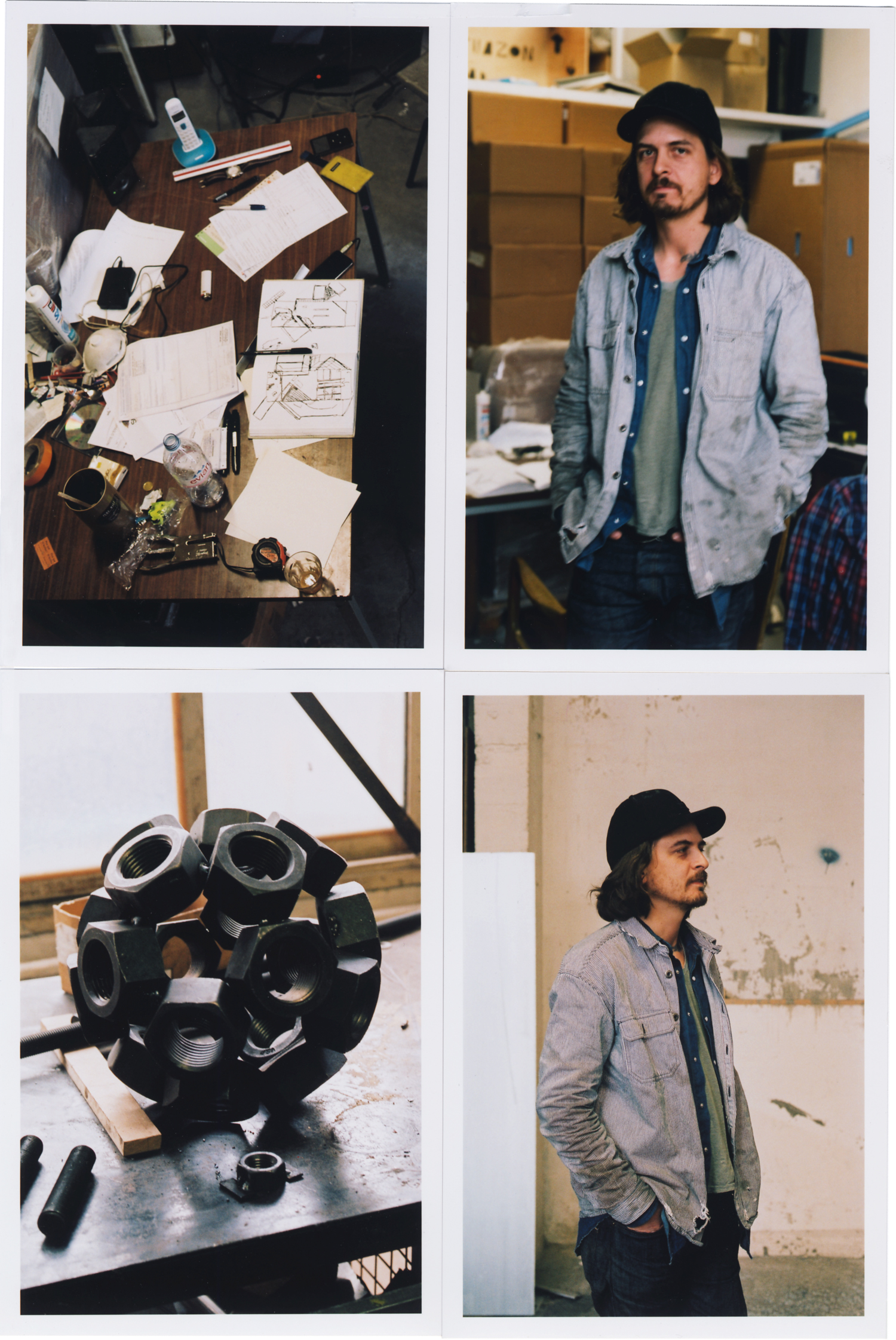Purple Magazine
— F/W 2012 issue 18
Oscar Tuazon
artist
text by JEFF RIAN
portrait by GIASCO BERTOLI
Oscar Tuazon was born in a geodesic dome in Seattle, Washington, in 1975. His father was a builder. But Oscar would become an artist. He enrolled in the Whitney Independent Study Program and worked for Vito Acconci, a poet who became a performance artist, and eventually, when Oscar joined him, worked with architects.
Oscar makes art from girders, beams, Plexiglas, tree trunks, glass, concrete, lamps, basins, and tires. His materials recall the heavy beams of medieval and pioneer architecture. He also brings forward minimalist art, but instead of the precision cutting and hieratic forms, which were a mainstay of minimalist art, Oscar’s art tends to be simply wrought, flexible, and modular.
For Hire, 2010, began with a modular form, 240 x 120 x 120 centimeters in scale, enough space for one person, and big enough for the basin of a…
